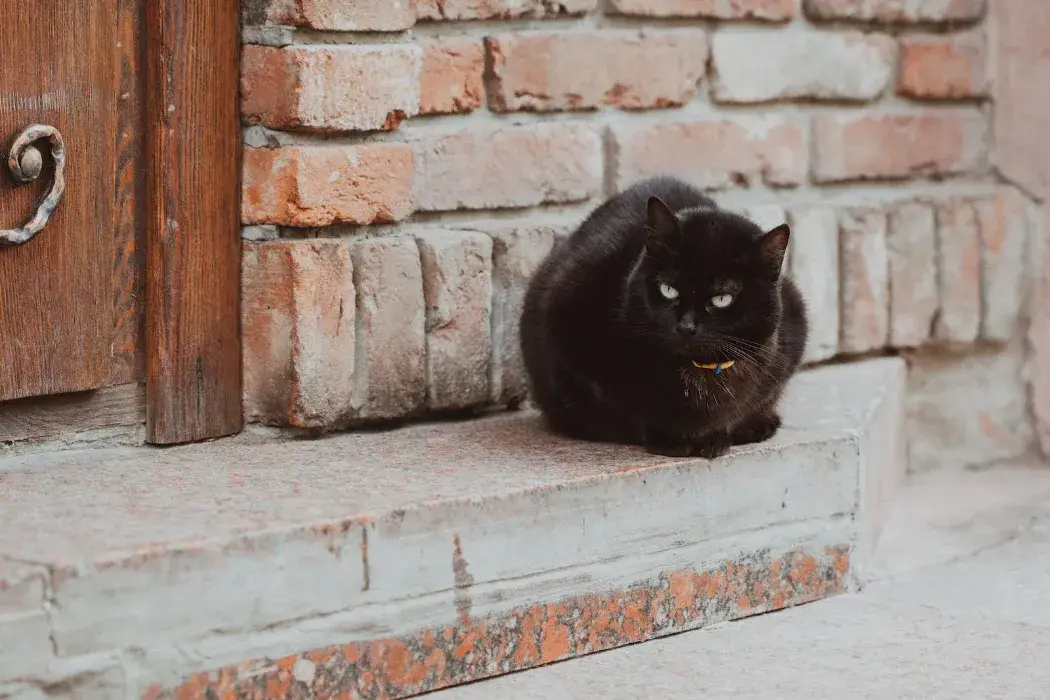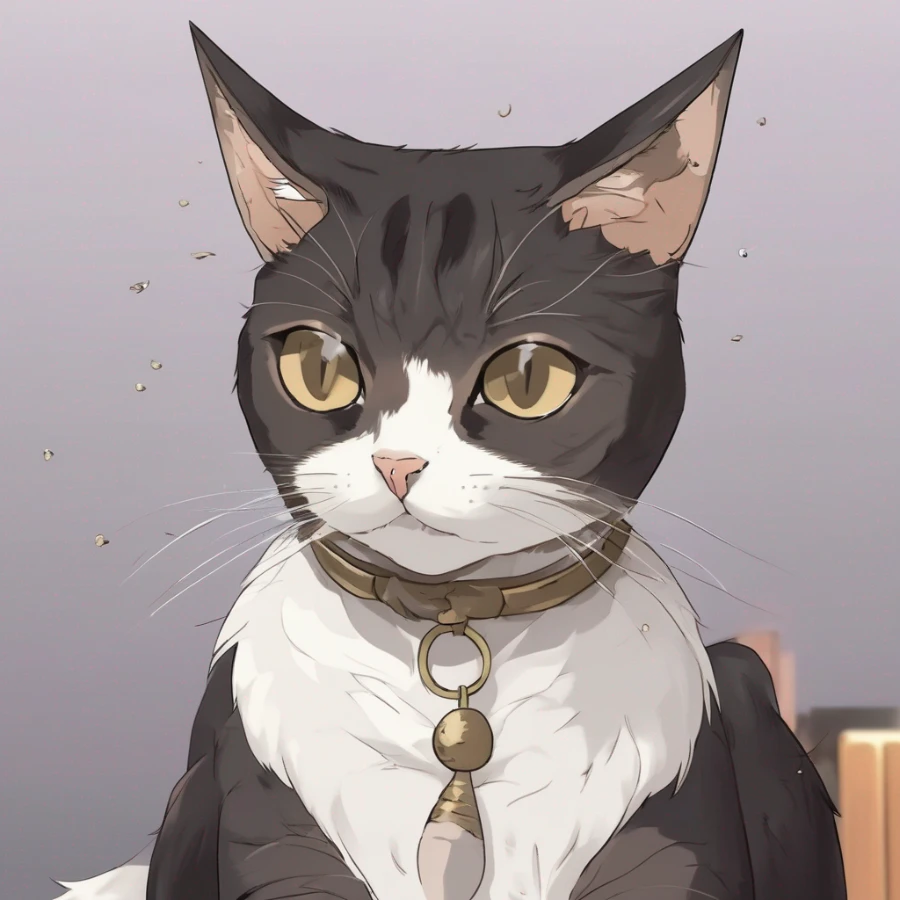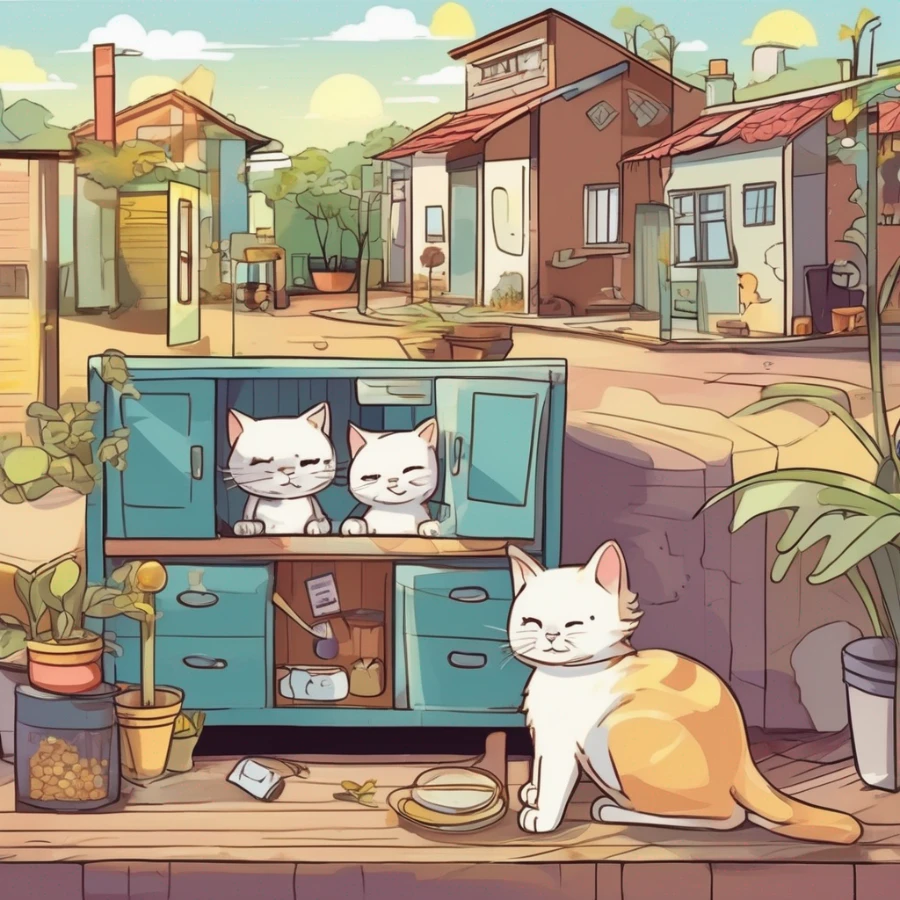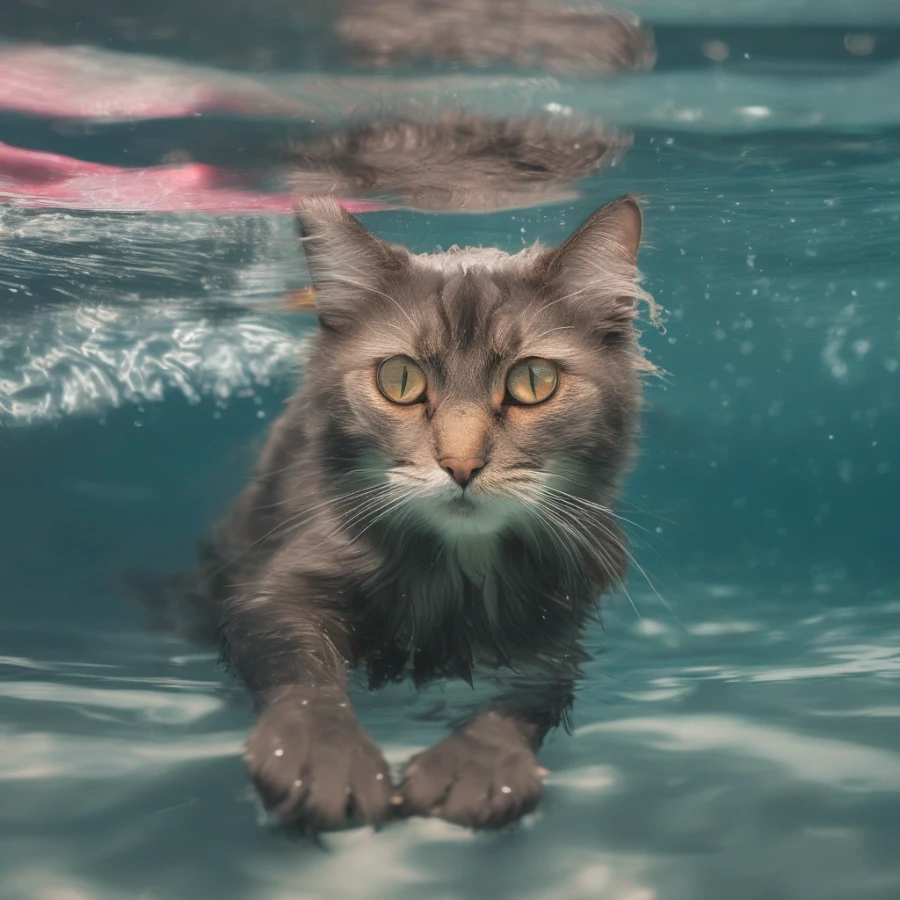Why Do Cats Loaf?

Published by: Tatsiana Korshik
Time to Read: 5 Min

Cats "loaf" when they sit in a specific position that resembles a loaf of bread. In this position, the cat tucks its front paws under its body and keeps its hind legs and tail neatly folded underneath it. The cat's body appears compact and rectangular, somewhat resembling a loaf of bread, which is how the term "loafing" originated.
There isn't a single definitive reason why cats loaf, but there are a few possible explanations:
Comfort: Loafing is often seen when a cat is resting or napping. This position allows the cat to keep its body warm and tucked in, providing a sense of security and comfort.
Heat Regulation: Cats loaf to conserve body heat. By curling up and tucking their limbs close to their body, they minimize heat loss. This behavior is especially common in colder environments.
Vigilance: Loafing allows cats to be in a compact and alert position. They can quickly transition from loafing to action if they sense a potential threat or prey nearby.
Flexibility: Cats are known for their flexibility, and the loafing position showcases their ability to curl up tightly. It's a way for them to show off their agility and flexibility.
Grooming: Cats often groom themselves while in the loafing position. It gives them easy access to their paws and face for cleaning.
Stretching: Interestingly, the loafing position can also be a way for cats to stretch their limbs after resting. When they transition out of the loafing position, they often extend their legs and arch their backs.
Ultimately, cats loaf for a combination of comfort, heat regulation, flexibility, and practicality. It's just one of the many quirky and adorable behaviors that make cats so intriguing to observe and interact with.
The Comfort and Relaxation Factor: The loaf position offers cats a way to preserve body warmth and create a snug, secure sensation. Cats are drawn to warm and cozy spots, and this posture facilitates that sense of comfort.
Heat Regulation: Cats gravitate toward warmth, and the loaf position helps them conserve body heat by minimizing heat loss. By curling up, they reduce the surface area exposed to the surroundings, thus retaining body warmth.
Demonstration of Flexibility: Cats are renowned for their exceptional flexibility. The loaf position highlights their capability to coil up tightly, showcasing their remarkable agility and flexibility.
Readiness for Vigilance: Even while loafing, cats remain moderately alert and prepared to respond to potential threats or opportunities. They can swiftly transition from loafing to movement.
Grooming Convenience: Cats frequently groom themselves while loafing, taking advantage of easy access to their paws, face, and other body parts for thorough cleaning.
Transition into Stretching: Interestingly, after loafing, cats often shift into a stretch, extending their limbs and arching their backs. This is a method of stimulating their muscles after a period of rest.
Ingrained Instincts: The ancestors of cats in the wild would adopt a compact posture to conserve body heat and safeguard vulnerable body areas. Although domestic cats face different circumstances, these instincts still linger.
Personal Preference: Much like humans have their favored sitting or resting postures, cats also display their own individual preferences. Some cats naturally find the loaf position to be comfortable.
It's crucial to bear in mind that each cat possesses its own distinct personality, and although the loaf position is widespread, not all cats will adopt it regularly. If your cat appears at ease, healthy, and content while loafing, there's typically no need for concern. This is merely one of the numerous charming and idiosyncratic manners in which cats convey themselves!
1. Comfort and Warmth: Tucking their paws under their bodies provides cats with a sense of security and warmth. By curling up in this way, they can conserve body heat and create a cozy, snug feeling.
2. Heat Regulation: Cats are drawn to warmth, and tucking their paws under themselves helps them minimize heat loss. This position reduces the surface area exposed to the cooler environment, helping them retain body heat.
3. Relaxation: When cats feel relaxed and at ease, they are more likely to tuck their paws under themselves. This position might also be associated with restful moments, as it allows them to settle into a comfortable and protected posture.
4. Instincts from the Wild: Cats' ancestors in the wild would often curl up tightly to conserve body heat and protect their vulnerable underbelly from potential threats. Although domestic cats don't face the same dangers, these instincts still influence their behavior.
5. Protection: Tucking their paws underneath might be a way for cats to shield their sensitive paw pads and claws from direct contact with surfaces that could be too cold, hot, or uncomfortable.
6. Stretching Transition: Cats frequently move from loafing into a stretch, where they extend their limbs and arch their backs. Tucking their paws initially facilitates this transition into a more extended position.
7. Sense of Security: Curling up in this manner might make cats feel more secure, as it minimizes their vulnerability by reducing their exposed body parts.
8. Adaptation to Environments: Cats are adaptable creatures, and their behaviors can be influenced by their surroundings. For example, a cat might tuck its paws under itself more tightly when in a confined or sheltered space.
Overall, tucking their paws under themselves is a behavior that reflects cats' natural instincts for warmth, comfort, and protection. It's a testament to their ability to adapt to different situations and environments while maintaining a sense of security and relaxation.
There isn't a single definitive reason why cats loaf, but there are a few possible explanations:
Comfort: Loafing is often seen when a cat is resting or napping. This position allows the cat to keep its body warm and tucked in, providing a sense of security and comfort.
Heat Regulation: Cats loaf to conserve body heat. By curling up and tucking their limbs close to their body, they minimize heat loss. This behavior is especially common in colder environments.
Vigilance: Loafing allows cats to be in a compact and alert position. They can quickly transition from loafing to action if they sense a potential threat or prey nearby.
Flexibility: Cats are known for their flexibility, and the loafing position showcases their ability to curl up tightly. It's a way for them to show off their agility and flexibility.
Grooming: Cats often groom themselves while in the loafing position. It gives them easy access to their paws and face for cleaning.
Stretching: Interestingly, the loafing position can also be a way for cats to stretch their limbs after resting. When they transition out of the loafing position, they often extend their legs and arch their backs.
Ultimately, cats loaf for a combination of comfort, heat regulation, flexibility, and practicality. It's just one of the many quirky and adorable behaviors that make cats so intriguing to observe and interact with.
why does my cat sit like a loaf
Cats often assume the "loaf" position as a result of their natural behaviors, adaptability, and need for comfort. The loaf position involves the cat folding its front paws beneath its body while tucking its hind legs and tail neatly underneath. Here are a few reasons why your cat might sit in the loaf position:The Comfort and Relaxation Factor: The loaf position offers cats a way to preserve body warmth and create a snug, secure sensation. Cats are drawn to warm and cozy spots, and this posture facilitates that sense of comfort.
Heat Regulation: Cats gravitate toward warmth, and the loaf position helps them conserve body heat by minimizing heat loss. By curling up, they reduce the surface area exposed to the surroundings, thus retaining body warmth.
Demonstration of Flexibility: Cats are renowned for their exceptional flexibility. The loaf position highlights their capability to coil up tightly, showcasing their remarkable agility and flexibility.
Readiness for Vigilance: Even while loafing, cats remain moderately alert and prepared to respond to potential threats or opportunities. They can swiftly transition from loafing to movement.
Grooming Convenience: Cats frequently groom themselves while loafing, taking advantage of easy access to their paws, face, and other body parts for thorough cleaning.
Transition into Stretching: Interestingly, after loafing, cats often shift into a stretch, extending their limbs and arching their backs. This is a method of stimulating their muscles after a period of rest.
Ingrained Instincts: The ancestors of cats in the wild would adopt a compact posture to conserve body heat and safeguard vulnerable body areas. Although domestic cats face different circumstances, these instincts still linger.
Personal Preference: Much like humans have their favored sitting or resting postures, cats also display their own individual preferences. Some cats naturally find the loaf position to be comfortable.
It's crucial to bear in mind that each cat possesses its own distinct personality, and although the loaf position is widespread, not all cats will adopt it regularly. If your cat appears at ease, healthy, and content while loafing, there's typically no need for concern. This is merely one of the numerous charming and idiosyncratic manners in which cats convey themselves!
why do cats tuck their paws under themselves
Cats tuck their paws under themselves for various reasons, many of which are rooted in their instincts, comfort, and physiological adaptations. This behavior is commonly observed in the "loaf" position, where a cat sits with its front paws neatly tucked under its body and its hind legs and tail similarly folded underneath. Here are some explanations for why cats engage in this behavior:1. Comfort and Warmth: Tucking their paws under their bodies provides cats with a sense of security and warmth. By curling up in this way, they can conserve body heat and create a cozy, snug feeling.
2. Heat Regulation: Cats are drawn to warmth, and tucking their paws under themselves helps them minimize heat loss. This position reduces the surface area exposed to the cooler environment, helping them retain body heat.
3. Relaxation: When cats feel relaxed and at ease, they are more likely to tuck their paws under themselves. This position might also be associated with restful moments, as it allows them to settle into a comfortable and protected posture.
4. Instincts from the Wild: Cats' ancestors in the wild would often curl up tightly to conserve body heat and protect their vulnerable underbelly from potential threats. Although domestic cats don't face the same dangers, these instincts still influence their behavior.
5. Protection: Tucking their paws underneath might be a way for cats to shield their sensitive paw pads and claws from direct contact with surfaces that could be too cold, hot, or uncomfortable.
6. Stretching Transition: Cats frequently move from loafing into a stretch, where they extend their limbs and arch their backs. Tucking their paws initially facilitates this transition into a more extended position.
7. Sense of Security: Curling up in this manner might make cats feel more secure, as it minimizes their vulnerability by reducing their exposed body parts.
8. Adaptation to Environments: Cats are adaptable creatures, and their behaviors can be influenced by their surroundings. For example, a cat might tuck its paws under itself more tightly when in a confined or sheltered space.
Overall, tucking their paws under themselves is a behavior that reflects cats' natural instincts for warmth, comfort, and protection. It's a testament to their ability to adapt to different situations and environments while maintaining a sense of security and relaxation.



